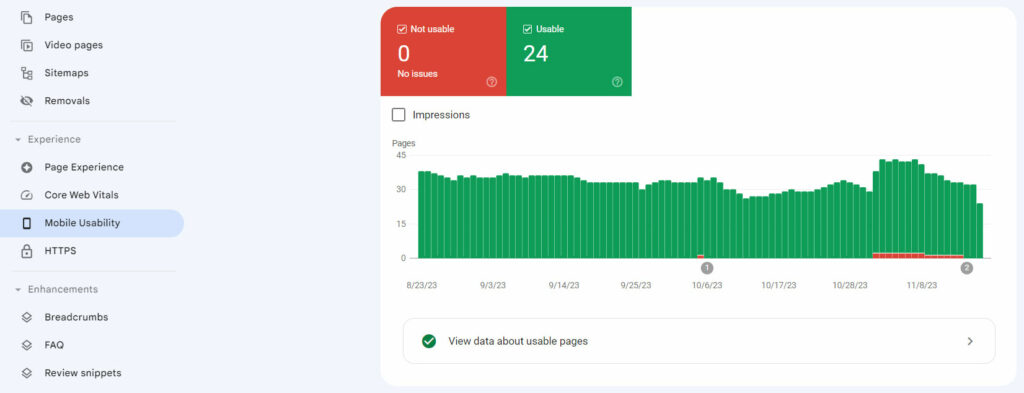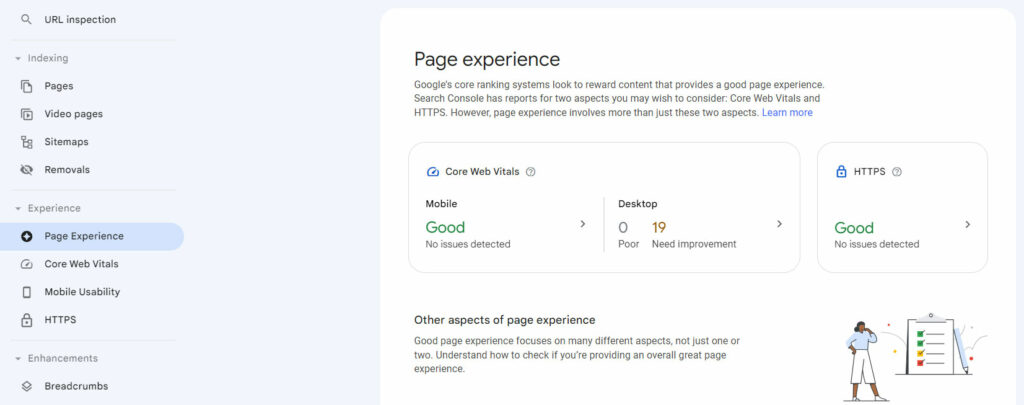Optimizing User Experience on Plastic Surgeon Websites
Posted by Surgeon’s Advisor

What is User Experience and Why is it Important in Digital Marketing?
User Experience (UX) is paramount in digital marketing, particularly for cosmetic surgeons, as it directly influences patient acquisition and retention. A well-designed UX strategy enhances conversion rates by guiding potential patients seamlessly through the surgical journey on the practice’s website. This involves intuitive navigation, informative content, and easy accessibility to features like patient reviews and educational materials. Moreover, prioritizing UX improves organic traffic and search engine rankings, as search algorithms increasingly favor user-friendly websites. By focusing on user satisfaction and engagement, cosmetic surgery websites can effectively attract and retain patients in a competitive online landscape, ultimately driving practice growth and success.
What Can You Do To Improve Your Website’s User Experience?
Improving the user experience (UX) of your website is not just about having an aesthetically pleasing design; it’s about creating a seamless journey for your visitors, particularly those seeking plastic surgery services. A website that effectively engages users can significantly influence important engagement metrics, such as traffic and the average time spent on each page. These metrics are vital indicators of how compelling and user-friendly your website is.
A positive user experience is reflected when potential patients not only visit your site but also interact with it—be it through phone calls initiated from your contact links or by filling out contact forms. This engagement is a strong sign that users are interested in becoming your plastic surgery patients. However, achieving this requires more than just a visually appealing site.
The key is to focus on optimizing your website in ways that genuinely resonate with your target audience. This involves understanding and addressing their needs and preferences, ensuring that every element of your website contributes to a smooth and satisfying user journey. By doing so, you not only capture their attention but also encourage them to take the next step in their journey to becoming your patients.
Ensure User Engagement By Creating High-Quality Content
The key to success lies in developing high-quality content that resonates with prospective patients and drives user engagement. Effective content goes beyond mere promotion; it serves as a valuable resource for individuals seeking information and guidance on surgical procedures and their options. By offering educational content, patient testimonials, and insights into various plastic surgery procedures, surgeons can address the concerns and questions of their audience while establishing credibility and trust.
Moreover, incorporating visual elements such as high-quality photos and videos enhances the user experience and reinforces the message of professionalism and expertise. Integrating SEO strategies ensures that this content reaches a wider audience through organic search traffic. Additionally, features like patient portals and accessible menus contribute to a seamless user journey, empowering individuals to make informed decisions about their cosmetic or reconstructive surgeries. By prioritizing the creation of engaging and informative content, plastic surgeons can foster meaningful connections with their audience, ultimately driving patient acquisition and practice growth.
Use White Space Generously and Simplify Your Design
Visual clutter often overwhelms users, and the use of white space in a surgeon’s website design emerges as a key factor in enhancing user experience. For plastic surgeons, adopting a design that is both elegant and simple, with generous white space, can significantly improve how potential patients interact with their website.
White space, often referred to as negative space, is the unmarked area between design elements. It is not merely ’empty’ space; it is a powerful design tool. By incorporating ample white space, you guide visitors’ attention to crucial information and features, such as your plastic surgery services and unique value propositions. This strategic use of space makes your website more readable and easier to navigate, contributing to a more pleasant browsing experience.
A simple, uncluttered design also aids in this endeavor. Rather than overwhelming visitors with excessive graphics, animations, and text, a minimalist approach focuses on the essentials. It helps in delivering your message more clearly and efficiently, enhancing the overall aesthetic appeal of your site. Such a design not only appeals to the eye but also ensures that your website is approachable and user-friendly, key aspects in attracting and retaining prospective clients.
Ensure That Your Website Has a Responsive Design
With the majority of internet users accessing websites via mobile devices, ensuring that your website seamlessly adapts to different screen sizes and orientations is essential. A responsive design not only provides a consistent user experience across devices but also enhances user engagement and accessibility, ultimately helping prospective patients make informed decisions about their surgical needs. Moreover, a responsive website design is crucial for search engine optimization (SEO), as search engines prioritize mobile-friendly websites in their rankings, leading to increased visibility and patient acquisition opportunities for plastic surgery practices. By prioritizing responsive design, plastic surgeons can ensure that their websites effectively engage with patients, provide valuable educational content, and showcase their expertise in surgical procedures.

Make Your Hyperlinks and Calls To Action Buttons Contrast
For a plastic surgery practice website, the clarity and visibility of interactive elements like hyperlinks and calls to action (CTA) buttons are pivotal in guiding prospective patients through the user journey. Ensuring these elements stand out through effective contrast is a key aspect of website optimization.
Hyperlinks and CTA buttons are the gateways for user interaction – whether it’s to learn more about a procedure, view before-and-after photos, or schedule a consultation. These elements need to be immediately noticeable to facilitate easy navigation. However, this doesn’t mean they should be overly dominant or disrupt the site’s visual harmony. The goal is to strike a balance where these elements are visually distinct yet seamlessly integrated into the overall design.
Effective use of color, size, and placement can make hyperlinks and CTA buttons stand out without being obtrusive. The contrast should be such that these elements are easily distinguishable from the rest of the content but not so stark as to distract or confuse the user. A well-designed website for a plastic surgery clinic will have these interactive elements tailored to catch the eye of potential patients, encouraging them to take the desired action without feeling overwhelmed or lost.
Leverage Interactive Content in Your Website’s User Interface
Integrating interactive elements such as before-and-after sliders, procedure selection body maps, and location widgets can elevate the functionality of your plastic surgery website. These features not only provide aesthetic appeal but also offer users a hands-on experience, allowing them to explore surgical procedures in an engaging and informative manner. Through interactive content, prospective patients can visualize potential outcomes, make informed decisions, and feel more confident about their choices. However, it’s essential to maintain a balance between interactivity and simplicity to ensure an intuitive user journey. By thoughtfully incorporating interactive elements, your website can serve as a valuable resource and guide, facilitating patient education and ultimately driving patient acquisition.
Make Sure Your Website Runs Fast And Smooth
Your website’s speed and smoothness are critical factors in retaining prospective patients’ attention. A website for plastic surgery services, laden with high-resolution images and detailed content, must be optimized for quick loading times and seamless navigation.
The reality is stark: most users will abandon a website that doesn’t load within the first few seconds. This impatience underscores the need for a well-optimized website. Images and videos, while essential for showcasing your work and expertise, should be compressed and optimized to ensure they do not hinder page loading speeds. Efficient coding, proper server resources, and the use of content delivery networks (CDNs) can significantly improve website performance.
Moreover, smooth navigation is just as important as speed. A website that is quick to load but difficult to navigate can be just as detrimental to user experience. The interface should be intuitive, with clear pathways to important information about your plastic surgery services. This ensures that once a prospective patient arrives at your site, they can easily find what they’re looking for without frustration or delay.
In essence, a fast and smooth-running website reflects the professionalism and care that patients can expect from your plastic surgery practice.
Avoid Poor User Experience: Test Your Site Regularly
Continuous testing is imperative for optimizing the user experience (UX) of your plastic surgery website. By regularly assessing various elements such as navigation, content clarity, and call-to-action effectiveness, you ensure that your site remains intuitive and engaging for potential clients. Usability testing uncovers hidden issues that could hinder the user journey, allowing for timely improvements and adaptations to evolving user preferences and technological standards.

Key metrics like Google’s Core Web Vitals should be closely monitored to gauge your website’s performance and responsiveness. Addressing these metrics not only enhances UX but also boosts your site’s visibility in search engine rankings. You can mitigate the risks associated with poor user experience through consistent testing and updates, maintaining a website that effectively converts potential leads into satisfied clients.
User Experience Optimization For Your Plastic Surgery Practice
Optimizing user experience on your website is paramount. It’s not merely about showcasing services but crafting an online environment that reflects the professionalism of your practice. Collaborating with a digital marketing expert versed in the nuances of the plastic surgery industry can yield significant dividends. As a cosmetic surgeon, your focus is on delivering exceptional results, and likewise, in digital marketing, the emphasis should be on creating an informative, intuitive, and reassuring user journey. Surgeon’s Advisor specializes in tailored marketing strategies for plastic surgery practices, ensuring your website not only attracts but also engages and retains potential patients through optimized design, compelling content, and seamless interfaces.
A well-optimized website is more than a marketing tool; it’s a reflection of your commitment to excellence. By partnering with Surgeon’s Advisor, you can ensure that your online presence is as professional and cutting-edge as the plastic surgery services you offer.